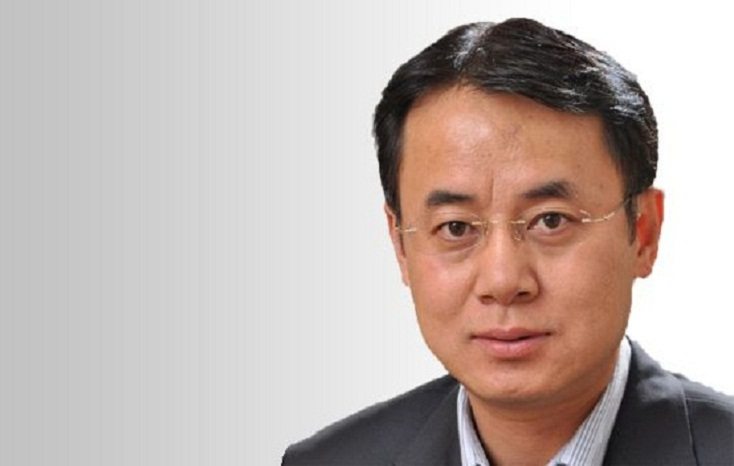GE’s past success in China hinged on localization. Its future, however, might be in reverse innovation.
Rising oil prices and the global financial crisis have dealt a harsh blow to the global aviation sector. The Chinese aviation industry, however, is bucking the trend. It has become the second-largest aviation market in the world, second only to the US. If projections of the Civil Aviation Administration of China are to be believed, carriers have pledged to buy on average more than 300 planes a year till 2015. The country has an ambitious plan to build 70 new airports in the next few years and expand 100 existing airports.
GE Aviation, a unit of General Electric Company, has been in China for 27 years now and is well-poised to tap the opportunity in China’s rapidly-expanding aviation sector. Among other things, the company has set up a systems manufacturing facility in Suzhou and has inked a joint venture with Aviation Industry Corporation of China (AVIC) for avionics.
The parent company, GE, has made China a crucial centerpiece of its globalization plan. It is not hard to see why-the company’s China revenue is growing at the rate of 20% a year, whereas it is facing declining revenues in its home market.
In this interview, Xiang Weiming, company veteran and General Manager at GE Aviation, talks about GE’s run in China so far, and elaborates on the lessons from GE’s globalization journey as well as its more recent ‘reverse innovation’ strategy. Excerpts:
Q. How is GE Aviation doing in Asia, especially in the Greater China region?
A. GE Aviation entered the Chinese market in 1985, when China Southwest Airlines and Yunnan Airlines unveiled their first batch of Boeing 737 airliners, whose engines were provided by CFM (a joint venture between GE and Snecma). The company has now been in China for 27 years, and holds an increasing share of the engine market. China has put more than 2,800 aircraft engines produced by GE and CFM into use, which accounts for around 60% of that market. In 2011, our turnover reached $1.2 billion, double the figure for 2005.
In terms of business development, there have been many changes at GE Aviation. When we entered the Chinese market, our business was mainly focused on selling engines, providing outsourcing as well as after-sales and overhaul services. Later on, GE Aviation began to purchase components in China and gradually participated in local independent research and development programs, including providing a power plant for ARJ, a regional airliner developed and manufactured in China.
We participated in the C919 Large Airliner Program in 2011, provided engines for it, and established a joint venture with Aviation Industry Corporation of China (AVIC) specifically to provide avionics systems for the aircraft.
Due to our expansion, GE Aviation has developed unprecedentedly in terms of personnel. I joined GE Aviation in 1992. Back then, GE Aviation had little more than 10 employees in China, but now the number exceeds 700.
Q. Your parent company GE’s globalization strategy has been very successful. Are there any lessons from the GE experience that Chinese enterprises could use as they go global?
A. GE’s global business contributes to 60% of its turnover, while North America (the home market) generates only 40%. It means that GE is no longer dependent on North America. [pullquote]GE’s strategy is to attach great importance to emerging markets, because their fast pace of development offers more opportunities.[/pullquote]
I believe that a successful global strategy should contain several elements. First, you need a thorough understanding of the local market, then a good knowledge of how to obtain support from the local government, you need real localization, suitable partners, and finally, well-chosen local talent to manage the business.
Many Chinese companies send their Chinese staff-from upper management to lower management-to expand business in foreign countries. This approach has its advantages, but if they want long-term cooperation abroad, they have to train local talent and ensure localized development and operation. A global enterprise requires localization to deal with the market, government, local products and partners. I believe these elements are essential to a successful global enterprise.
Q. During the process of globalization, enterprises may be prone to problems like poor adjustment and cultural conflicts. What has GE Aviation done to integrate the corporate culture with local culture?
A. As far as I’m concerned, GE Aviation’s practice of adopting a local management team has avoided maladjustment to a large extent, but of course, time is needed. When we first entered the Chinese market, it was impossible to give the most important work to inexperienced local managers. Over time, as local talent gathers experience, they gradually become qualified for key positions. Local managers have many advantages when it comes to cultural exchanges and communication, especially regarding the needs of clients.
Q. Many multinational companies often have a communication barrier between the headquarters and the subsidiaries abroad. How does GE Aviation get around this issue?
A. Each of our global business corporations keeps in contact with GE companies in China. We have a regular quarterly meeting where we discuss how to establish a better platform for each business department to develop in China. The topics can range from government relations and policy-making, to research and development. Many GE strategies for China were conceived via this approach, when we run into difficulties or challenges, especially with government relations, we seek help from the head office.
Take my position as an example. I visit the headquarters every month in the first quarter of each year to discuss our strategies for the coming year with the concerned people and departments. I also communicate with my superior at our headquarters on a weekly basis. We normally brief everyone on the global situation first, while I brief them on China’s situation.
The briefings are normally done through teleconference, but seeing is believing. Since I took over GE Aviation, each year I invite our global vice-presidents to conduct field surveys in China during different seasons and at different times. During a typical field survey, they spend a week visiting clients and gathering feedback, including comments on our products and services, upcoming plans and the intentions of some airlines. After the survey, the senior officials from the headquarters tend to change their opinions about the Chinese market and our clients. Personally I believe it’s the best way of communication, and one which can facilitate a better understanding of China.
Q. GE is over a century-old. Again, are there any lessons from GE’s experience that Chinese enterprises can emulate to achieve long-term sustainable development?
A. I think enterprises should first promise to abide by the laws and policies made by the state and government, which are of great significance in the long run. GE has abandoned many businesses over problems which arise from legislation. Many enterprises are financially ruined or even go bankrupt when they incur government fines for violating the law.
In order to become a company that can withstand the test of time, one should constantly change, discover and adjust to new markets, instead of adhering to old practices. Past success doesn’t ensure future success. Kodak is the most telling example. Kodak was a pioneer of the analogue film industry, but became bankrupt with the onset of the digital era.
Q. GE is famous for its ‘reverse innovation’ strategy (See ‘The Business Imperative behind Reverse Innovation’). Can you elaborate a little more on this strategy, particularly how it plays out in China?
A. GE plans to establish at least three innovation centers in China, with a view to a total of six in future. An innovation center in Chengdu has already been established, and centers in Xi’an and Shenyang will be set up soon. Researchers and developers at the sites include not only engineers, but also marketers and managers, and even staff from our cooperating partners. They make a joint effort to develop products that satisfy local needs. Every market is different. We wish to develop products that will satisfy local needs and then promote them nationwide.
The ‘reverse innovation’ strategy aims to take new products developed in the Chinese market and promote them in the US and the rest of the world. For example, our low-cost CT scanner machine developed in China has been successfully launched in the American market.
The Business Imperative behind Reverse Innovation
Traditionally, MNCs have gone about globalization with the mentality of ‘planting flags’ across the world. They took products from their home markets and distributed them across the world, sometimes with minor adaptations to suit local conditions. With the rise of emerging markets and the slowing down of the developed world, that strategy is becoming increasingly obsolete. And as MNCs are discovering, if they are to succeed in the long run, they need to be more responsive to the needs of the emerging market consumer and pay greater attention to local conditions. Two, they also need to pre-empt local competition.
That’s why GE has started something which CEO Jeff Immelt calls ‘reverse innovation’. The company is betting big on innovations in developing countries. For example, in 2009, GE created a portable ultrasound machine in China, and a handheld electrocardiogram device in India. Both products cater to local conditions without sacrificing quality, and are meant for price-conscious consumers-the ultrasound machine sells for as little as $15,000, whereas the ECG machine comes at a price tag of $1,000. These devices-innovations from the emerging market-are now also being sold in the US, something that was unheard of just 10 years ago.
As Immelt wrote in a Harvard Business Review article titled ‘How GE is Disrupting Itself’ (co-authored with Vijay Govindarajan and Chris Trimble), “To put it bluntly: If GE’s businesses are to survive and prosper in the next decade, they must become as adept at reverse innovation as they are at glocalization. Success in developing countries is a prerequisite for continued vitality in developed ones.”




















